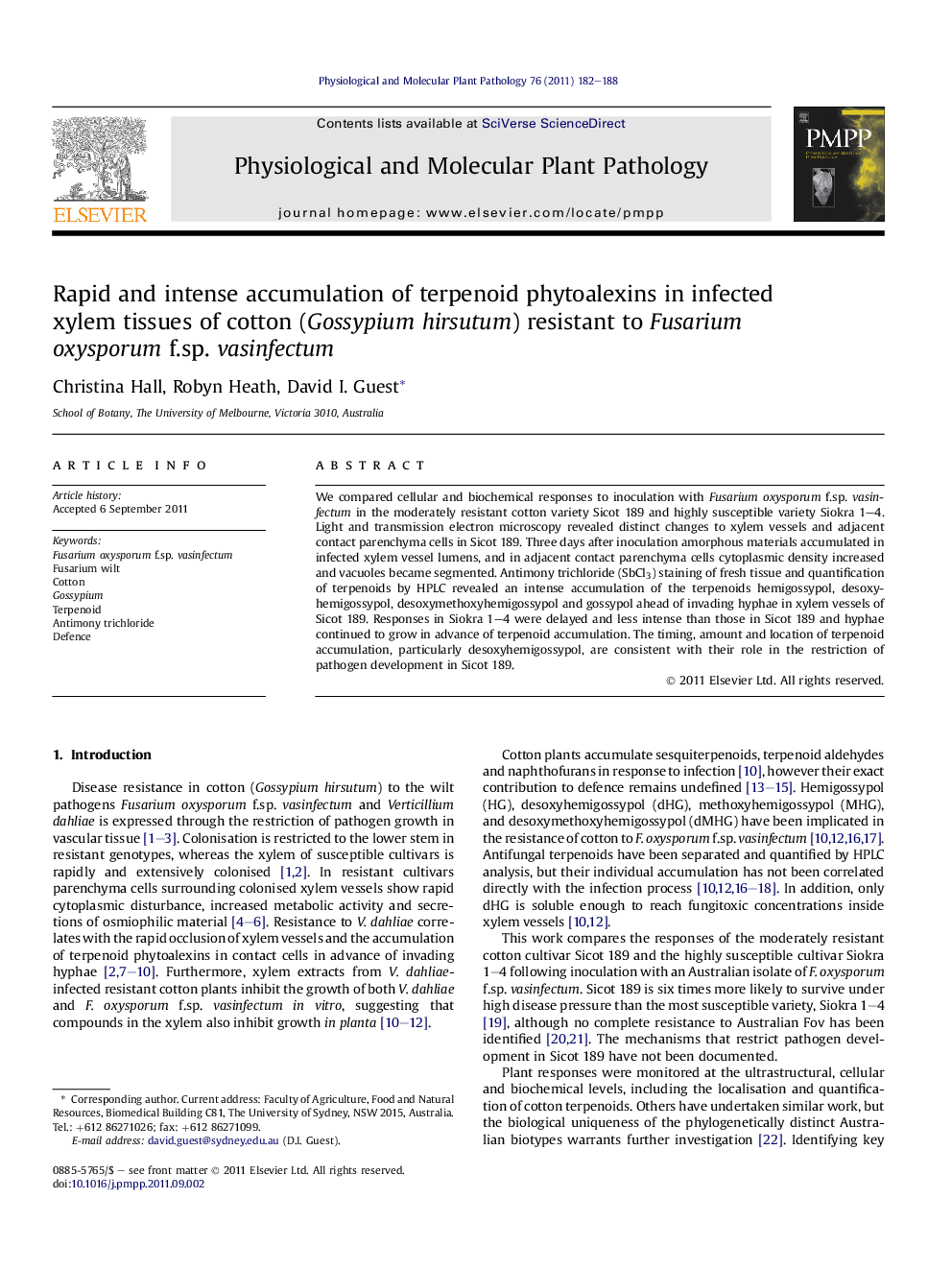| Article ID | Journal | Published Year | Pages | File Type |
|---|---|---|---|---|
| 2836531 | Physiological and Molecular Plant Pathology | 2011 | 7 Pages |
We compared cellular and biochemical responses to inoculation with Fusarium oxysporum f.sp. vasinfectum in the moderately resistant cotton variety Sicot 189 and highly susceptible variety Siokra 1–4. Light and transmission electron microscopy revealed distinct changes to xylem vessels and adjacent contact parenchyma cells in Sicot 189. Three days after inoculation amorphous materials accumulated in infected xylem vessel lumens, and in adjacent contact parenchyma cells cytoplasmic density increased and vacuoles became segmented. Antimony trichloride (SbCl3) staining of fresh tissue and quantification of terpenoids by HPLC revealed an intense accumulation of the terpenoids hemigossypol, desoxyhemigossypol, desoxymethoxyhemigossypol and gossypol ahead of invading hyphae in xylem vessels of Sicot 189. Responses in Siokra 1–4 were delayed and less intense than those in Sicot 189 and hyphae continued to grow in advance of terpenoid accumulation. The timing, amount and location of terpenoid accumulation, particularly desoxyhemigossypol, are consistent with their role in the restriction of pathogen development in Sicot 189.
► Two Australian cotton cultivars respond differently to F. oxysporum f.sp. vasinfectum. ► Resistance coincides with rapid responses in xylem. ► Terpenoids accumulate in vessels ahead of the invading pathogen in resistant plants. ► Antifungal terpenoid accumulation coincides with restriction of xylem colonisation. ► Defence responses are delayed and less intense in susceptible plants.
